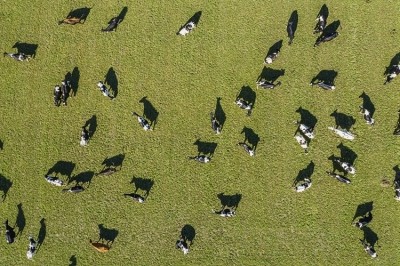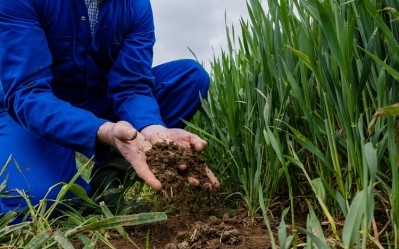Is the EU’s Nature Restoration Law compatible with regenerative agriculture?

Regenerative agriculture is, in concrete terms, not yet officially defined. The SAI platform, a group of companies practicing regenerative agriculture, defines it as ‘an outcome-based farming approach that protects and improves soil health, biodiversity, climate, and water resources while supporting farming business development'. Regen10, a programme led by the Sustainable Food Trust and the Food and Land Use Coalition (FOLU), last year developed a framework which encouraged a more holistic approach to regen ag.
But one thing is for sure: it aims to regenerate the land. This could mean looking after ecosystems, restoring biodiversity or protecting soil health, but it tends to focus on agricultural practices, which make for a healthier ecosystem.
The European Union’s new Nature Restoration Law has similar aims. Part of the EU’s biodiversity strategy, it sets binding targets to restore degraded ecosystems, including wetlands, forests, grasslands, rivers, and marine ecosystems. It aims to restore biodiversity, limit global warming, and most importantly for the topic at hand, help to pollinate crops. It aims to cover at least 20% of the EU’s land and sea areas by 2030, and all ecosystems in need of restoration by 2050.
“If anybody is questioning that we need a strong nature restoration law, it’s actually questioning that humans are a part of nature, and I think this is not a good position,” said Janez Potočnik, co-chair of the UN Environment Programme’s International Resource Panel.
How does the EU’s Nature Restoration Law apply to regenerative agriculture?
For agricultural ecosystems, the law aims to increase the stock of organic carbon in cropland mineral soils, as well as the share of agricultural land that has high-diversity landscape features.
Furthermore, it aims to restore drained peatlands under agricultural use, and increase farmland birds and grassland butterflies.

It aligns, according to Olivia Boothman, global farm metric projects officer for the Sustainable Food Trust, with the principles of regenerative agriculture. “Encouragingly, the EU Nature Restoration Law acknowledges that agriculture, when practiced according to regenerative principles, can form part of the solution to the nature crisis. This is a positive shift away from the dominant narrative which tends to segregate nature from food production,” she told FoodNavigator.
“A regenerative model of agricultural production works in harmony with nature, but also relies on nature to provide the ecosystem services, such as pollination, on which this style of farming depends. Healthy nature is critical to the resilience of our farms in the face of climate change and so protecting it is also critical to long term food security.”
Overall, she told us, the EU’s law aligns quite closely with the goals of regenerative agriculture. For example, the increasing of biodiversity and enhancing of carbon stock in soils are goals that Regen10’s outcomes-based framework also aims towards.
What are some key regenerative agriculture practices?
Regenerative agriculture uses practices such as cover cropping (using crops to cover the soil to protect it from the elements), no tillage (inserting crops directly into the soil), and the reduction of chemical agents, instead using things such as bacteria. These protect the land from degradation, making regenerative practices more sustainable.
In the view of EIT Food, the Nature Restoration Law is not only compatible with regenerative agriculture, but the latter is an integral part of the former.
“In order to achieve these targets, we must accelerate and scale the adoption of regenerative agriculture. As countries develop their National Restoration Plans in response to the new law, we urge policymakers to consider how they can build in support for farmers to make the transition. This means accelerating innovation in technologies and solutions that will make regenerative practices more efficient; incentivising farmers to make the transition through new business models and upskilling opportunities; and standardising data for benchmarks and baselines, which would allow the effects of regenerative practices to be monitored and verified over time," EIT Food CEO Richard Zaltzman told FoodNavigator.
Could any aspect of the law hinder regenerative agriculture?
There are, Sustainable Food Trust's Boothman suggested, risks to implementing such a law. For example, nature restoration laws like this one, she told us, have been known to separate restored land and agricultural land, rather than restoring land used for agriculture.
The law does not ‘incentivise’ this kind of separation, she told us, but nevertheless policymakers in member states must be careful. “Without an effective national land-use strategy in place, nature restoration laws could inadvertently drive the separation of agricultural and ’natural’ land, forcing the remaining agricultural land to become more intensive to maintain yields. This would not only hinder the regenerative agriculture movement but also society’s progress towards our shared climate and ecological goals.”
Furthermore, she suggested, it is critical that policymakers consider nature restoration laws in the context of other key elements such as food security, as well as the drive towards a net zero economy.
It is also important to take farmers’ views into account, she told us. The voices of farmers from smaller farms in particular, she suggested, have historically been neglected by the EU’s Common Agricultural Policy (CAP).
Does regenerative agriculture need a definition?
While many of its practices are indeed more sustainable than traditional agriculture, without a clear definition, suggested Marcelo Torres, president of Aapresid (the Argentine No-till Farmers Association), the term ‘regenerative agriculture’ may become merely ‘a fashionable term’ that industry stops using in a few years’ time.
These farms have potential for dynamism given the smaller scale of their operations, and thus can change more efficiently to regenerative practices. This means, however, a mindset shift. And yet for nature restoration to be achieved, taking farmers on board is clearly beneficial.
“Ensuring that this transition is just and equitable gives nature restoration - and the other co-benefits which can be achieved by adopting regenerative agriculture - the best chance of succeeding and enduring and at the heart of this lies radical inclusion of all affected parties,” she told us.
How can individual countries implement the Nature Restoration Law?
After being enacted at EU-level, implementing the law is up to individual EU member states. Member states are expected to deliver their plans to the commission within two years of the law’s enactment. These plans will differ between each state and what policies are enacted will be largely context-dependent.
“A key principle of regenerative agriculture is understanding the context. Not all farms are created equal and each will respond differently based on their ecological, socio-cultural and economic features. In combination with an effective land-use strategy, this principle must be applied when governments develop their national restoration plans to ensure maximal achievement of the targets of the Nature Restoration Law,” Boothman told us. Working with farmers to develop targets, she suggested, is a path to ensuring this context is taken into account.
To harness the potential that agriculture, particularly regenerative agriculture, has to combat crises such as climate change, deforestation, overfishing, nature depletion and food insecurity, government departments must work together, Boothman told us.
“It is imperative that government departments work together to realise these changes, and, crucially, that farmers are supported through the transition to more sustainable farming, and are recognised and valued for their contributions to society, not only as food producers but critical custodians of the land.”
Updated on 12/7/2024 to include comment from EIT Food.


















